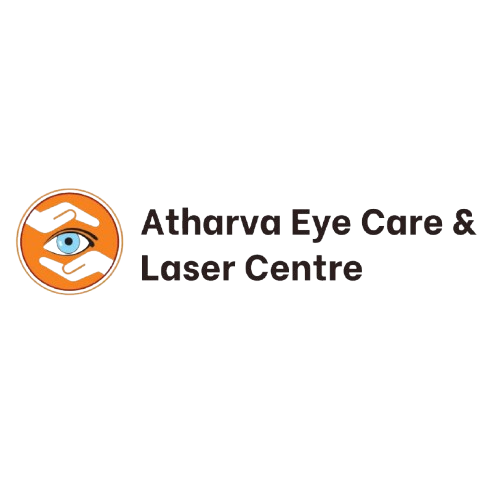- September 2, 2025
- By: atharvaeyeclinic.com
- No Comments
Understanding Vernal Conjunctivitis: Causes, Symptoms & Treatment
When the seasons change—especially during spring and summer—some people experience more than just allergies. One such condition that affects the eyes during these times is Vernal Conjunctivitis. Though not very common, it can cause serious discomfort, especially in children and young adults.
In this article, we’ll help you understand what vernal conjunctivitis is, its causes, symptoms, and how it can be effectively treated and managed.
What is Vernal Conjunctivitis?
Vernal Conjunctivitis, also known as Vernal Keratoconjunctivitis (VKC), is a chronic allergic eye condition. It primarily affects the conjunctiva—the thin, transparent membrane covering the white part of the eye and the inside of the eyelids.
Vernal conjunctivitis is most often seen in children and teenagers, particularly boys between the ages of 5 and 15. The condition usually worsens with seasonal changes, especially in warm, dry, and windy climates.
While VKC is not contagious, it can be recurrent and severely irritating, often affecting daily activities, especially if left untreated.
What Causes Vernal Conjunctivitis?
Vernal conjunctivitis is an allergic reaction triggered by environmental allergens. The exact cause isn’t always clear, but it is believed to be related to the body’s overactive immune response to allergens.
Common triggers include:
- Pollen (trees, grass, or flowers)
- Dust and dust mites
- Pet dander
- Smoke or air pollution
- Seasonal changes (spring/summer)
Children with a history of allergies, asthma, or eczema are more prone to developing vernal conjunctivitis.
Recognizing the Symptoms
The symptoms of vernal conjunctivitis can range from mild to severe. Since it’s a chronic condition, symptoms may persist for several weeks or even months if not managed properly.
Common symptoms include:
- Itching: One of the most prominent symptoms. Itching can be intense and constant.
- Redness: The whites of the eyes may appear red or bloodshot.
- Watery or thick mucus discharge: Especially in the morning or after rubbing the eyes.
- Swollen eyelids: Eyelids may become puffy or droopy due to inflammation.
- Sensitivity to light (photophobia): Bright lights may cause discomfort.
- Burning or stinging sensation: Often described as having “grit” in the eyes.
- Blurry vision: Due to inflammation or mucus accumulation.
- Large, cobblestone-like bumps on the inner upper eyelid (seen during an eye exam).
These symptoms usually affect both eyes and can significantly impact a child’s comfort, focus, and overall quality of life.
Types of Vernal Conjunctivitis
There are three types of VKC based on where the inflammation appears:
- Palpebral VKC: Affects the inside of the upper eyelids and is the most common type.
- Limbal VKC: Affects the edge of the cornea (limbus).
- Mixed VKC: Features a combination of both palpebral and limbal involvement.
Each type may show different signs during an eye examination, which helps in diagnosis and treatment planning.
How is Vernal Conjunctivitis Diagnosed?
At Atharva Eye Clinic, our eye specialists begin with a detailed medical history and symptoms check. We may conduct:
- Slit-lamp examination: A close-up look at the eye structures, especially the conjunctiva and cornea.
- Eyelid flipping: To check for large bumps on the inner eyelid.
- Tear sample tests (if needed): To look for allergic cells.
If needed, allergy testing may also be recommended to identify specific triggers.
Treatment Options for Vernal Conjunctivitis
The goal of treatment is to relieve symptoms, reduce inflammation, and prevent complications like corneal damage.
- Avoiding Triggers
- Stay indoors during high pollen days.
- Use protective sunglasses.
- Keep windows closed during dry, windy weather.
- Use air purifiers and keep the surroundings dust-free.
- Cold Compress
Applying a clean, cold compress to the eyes can help reduce itching and swelling.
- Eye Drops
- Antihistamine drops: To relieve itching and redness.
- Mast cell stabilizers: Help prevent allergic reactions over time.
- Dual-action drops: Combine both antihistamines and mast cell stabilizers.
- Steroid eye drops (only under doctor supervision): Used in severe cases to reduce inflammation. These are effective but must be used cautiously due to possible side effects like glaucoma.
- Oral Medications
In some cases, antihistamine tablets may be prescribed alongside eye drops.
- Lubricating Eye Drops
Preservative-free artificial tears can help wash out allergens and soothe irritation.
When to See an Eye Specialist
While mild seasonal allergies may go away on their own, vernal conjunctivitis should always be evaluated by an eye specialist—especially if:
- Symptoms persist for more than a few days.
- Vision becomes blurry or painful.
- There’s a thick mucus discharge.
- Light sensitivity becomes extreme.
- The child is rubbing their eyes excessively.
At Atharva Eye Clinic in Kalyan, we provide accurate diagnosis and tailor-made treatment for allergic eye conditions like VKC. With the right care, most children recover well and live comfortably without long-term eye damage.
Conclusion
Vernal conjunctivitis, though not life-threatening, can significantly affect a child’s comfort, vision, and day-to-day activities if not treated properly. Understanding its causes, recognizing the symptoms early, and following a personalized treatment plan are key to managing this condition effectively.
At Atharva Eye Clinic, we are committed to providing compassionate, expert care for children and adults dealing with allergic eye conditions like VKC. Our goal is to relieve discomfort, protect long-term vision, and help you or your child enjoy the seasons without worry.
If you notice signs of persistent eye irritation, itching, or sensitivity to light—especially during seasonal changes—don’t hesitate to consult our experienced eye specialists.
Your eyes deserve timely care—schedule your appointment today and take the first step toward healthier vision.

